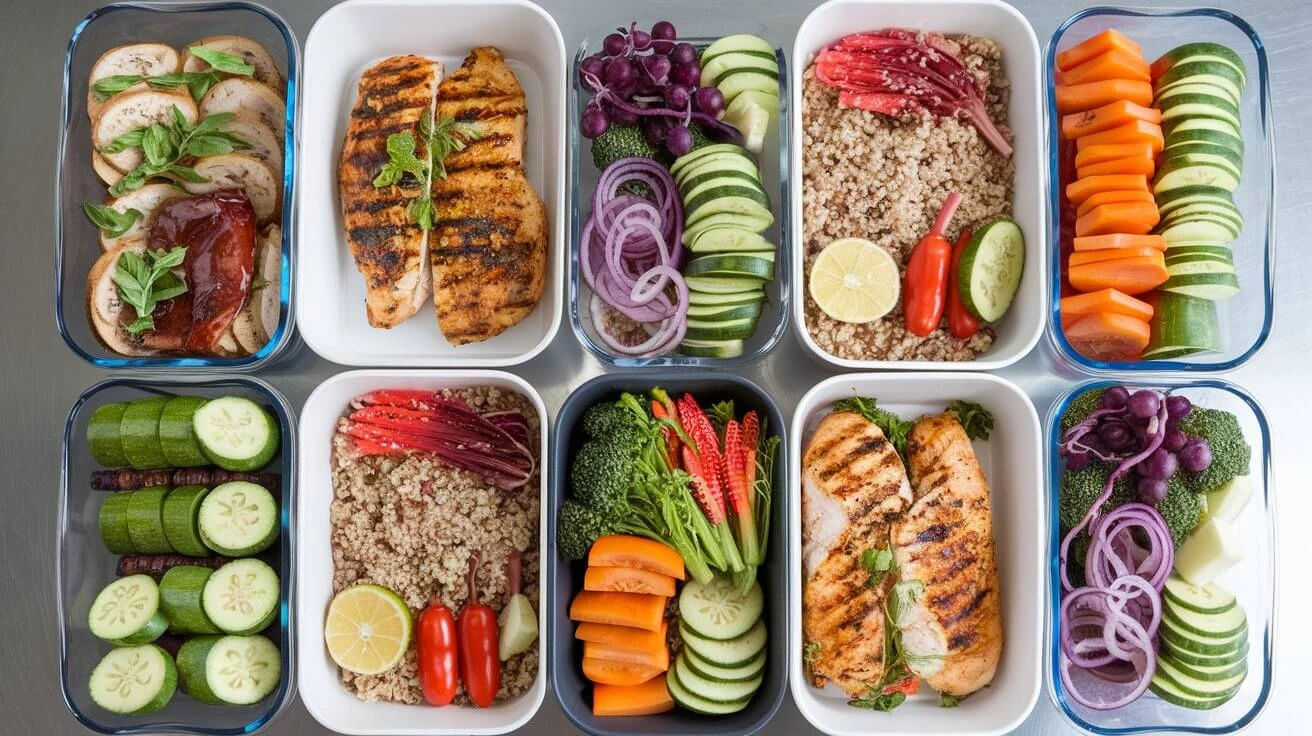Meal prepping is a game-changer for anyone looking to save time, eat healthier, and stick to a budget. But when it comes to prepping meals for an entire workweek, one question looms large: is it safe to meal prep for 5 days? The answer is yes—but only if you follow specific guidelines to ensure the safety and freshness of your meals. In this article, you’ll uncover 10 surprising facts that will help you meal prep safely and confidently.
Understanding Meal Prep Safety Basics
To ensure your meals remain safe and delicious, you need a solid understanding of food safety. Here are three key areas to focus on:
Why Food Safety Matters in Meal Prep
Improperly stored or handled food can lead to bacteria growth, which causes foodborne illnesses. The FDA recommends keeping perishable foods at safe temperatures to minimize risks. This is especially crucial when you’re storing meals for several days.
Ideal Storage Temperatures for Meal Prep Foods
Your refrigerator should be set at 40°F (4°C) or below, while your freezer should maintain 0°F (-18°C). These temperatures slow bacterial growth and keep your food fresh for longer. Investing in a fridge thermometer can help you ensure these temperatures are consistently maintained.
Common Mistakes That Lead to Food Spoilage
- Leaving food at room temperature for over two hours.
- Storing hot meals in the fridge without cooling them down first.
- Using containers that don’t seal properly.
How Long Does Meal Prep Last in the Fridge?
Knowing how long different foods last in the fridge can prevent you from eating spoiled meals. Here’s what you need to know:
General Shelf Life of Meal Prep Foods
- Cooked proteins (chicken, beef, fish): 3-4 days
- Grains (rice, quinoa, pasta): 4-5 days
- Roasted vegetables: 3-5 days
- Fresh salads: 1-2 days (unless stored without dressing)
Signs That Meal Prep Food Has Spoiled
- A sour or off smell.
- Changes in texture, such as slimy meat or mushy vegetables.
- Visible mold or discoloration.
When to Freeze Meal Prep Meals for Extended Freshness
If you’re prepping meals for more than four days, consider freezing them. Freezing halts bacterial growth and can preserve your meals for weeks. Be sure to use freezer-safe containers to prevent freezer burn.
Best Practices for Safe 5-Day Meal Prep
Following these practices ensures your meals stay safe and delicious for the entire week:
Choosing the Right Containers for Meal Prep
Opt for BPA-free, air-tight containers to keep your meals fresh. Glass containers are an excellent choice as they don’t retain odors or stains, making them perfect for long-term storage.
Using Fresh, High-Quality Ingredients
Start with the freshest ingredients possible. Check expiration dates, inspect produce for bruises, and avoid using ingredients that are close to spoiling.
Portioning and Labeling Meals
Divide your meals into individual portions to reduce the risk of cross-contamination. Label each container with the preparation date so you know when to consume or freeze it.
Foods That Are Safe to Prep for 5 Days
Not all foods are created equal when it comes to meal prepping. Some hold up well for five days, while others spoil quickly. Here’s a breakdown:
Examples of Durable Meal Prep Foods
- Grains: Brown rice, quinoa, and couscous stay fresh for up to five days.
- Proteins: Roasted chicken, baked tofu, and hard-boiled eggs are great options.
- Vegetables: Roasted sweet potatoes, broccoli, and carrots maintain their texture and flavor.
Foods to Avoid for Extended Meal Prep
- Leafy greens like spinach and arugula wilt quickly when dressed.
- Fresh-cut fruits such as apples and bananas may brown or lose texture.
- Delicate sauces like avocado-based dips can spoil in just a couple of days.
Recipes Designed for 5-Day Meal Prep Safety
Consider recipes like baked salmon with quinoa and roasted veggies or hearty lentil soups, which reheat beautifully and stay fresh for days. Soups and stews, in particular, often taste better as the flavors meld over time.
Avoiding Cross-Contamination and Foodborne Illness
One of the biggest risks in meal prepping is cross-contamination. Follow these tips to keep your meals safe:
Tips for Proper Handling of Raw and Cooked Foods
- Use separate cutting boards for raw meats and vegetables.
- Wash your hands thoroughly before and after handling raw foods.
- Store raw and cooked items separately to prevent contamination.
Cleaning and Sanitizing Meal Prep Tools
Regularly clean cutting boards, knives, and containers with hot, soapy water. For added safety, sanitize them with a diluted bleach solution or dishwasher-safe cleaning method.
Avoiding Over-Packing the Fridge
Overcrowded refrigerators can restrict airflow, preventing consistent cooling. Leave space between containers to ensure proper air circulation and maintain safe storage temperatures.
Conclusion
Meal prepping for five days is not only safe but also incredibly rewarding when done correctly. By following the tips and practices outlined in this article, you can enjoy fresh, delicious meals all week without worry. From using high-quality ingredients to choosing the right containers and freezing when necessary, every step you take contributes to safe and effective meal prep.
So, are you ready to take your meal prep to the next level? Start by planning your next 5-day menu and put these tips into action. Your future self will thank you for the time, energy, and peace of mind you’ve saved. Happy prepping!

